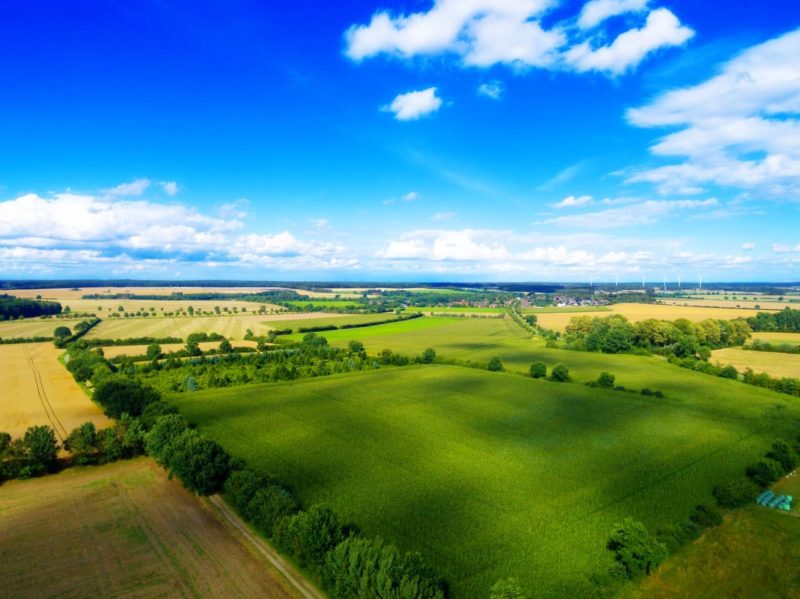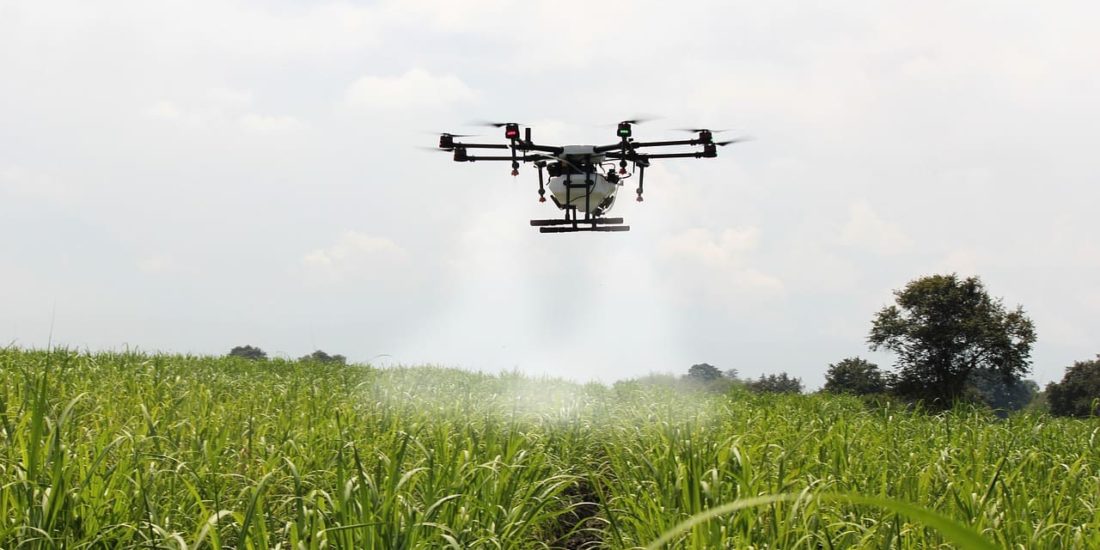Digital transformation in the agricultural sector: drone technology
Agriculture, contrary to what many may seem, is a sector that has always been closely linked to the latest technological advances. Proof of this is the constant appearance and development of new techniques and tools for the improvement of all aspects related to crops, such as drones.
The emergence of drones has been a great step forward for the advancement of many sectors, since its application is wide. Throughout the following lines we will analyze the main applications of drone technology in the field of agriculture, assuming an important contribution to the digital transformation of the sector.
Crop monitoring
The use of drones is very useful to make a sweep of crop fields that allows detecting certain characteristics of the same.
This is achieved thanks to the placement of sensors for the determination of the amounts of light absorbed and reflected by their wavelengths. These sensors can make use of filters that improve the resolution of the images obtained.
For example, those plants deficient in nitrogen can be identified, which will grow more slowly and, therefore, will need a contribution of this nutrient. With this, an accurate fertilization program can be defined according to the nutritional needs of each area of the field.
Another interesting application is to identify those plants that suffer some disease or need irrigation, since their degree of reflection of light is different from that of healthy species. It is also possible to detect the herbicide-resistant weeds found in the fields.
Currently, there is an interesting line of research on algorithms that, by studying the texture and shape of a plant, allow cotton to be distinguished from grass.
With the appearance of these applications have begun to replace aircraft and satellites for tasks such as the creation of Normalized Difference Vegetation Index (NDVI) maps, with which, thanks to the spectral reflection measures, you can see the amount, quality and development of the vegetation.
The monitoring of the fields by drones has supposed certain advances in front of some inconveniences that the use of images taken by satellite posed. In this case the images were taken only once a day and their definition was smaller, depending in important degree on the weather conditions. To all this we must add the high economic cost that it required.
Currently, thanks to drones, animations can be created to observe the development of crops, thus favoring their control.
Analysis of the field of cultivation
Another application of great interest of drones in agriculture is the study of the land in which it is going to be cultivated.
Its role can be very practical during the beginning of the cultivation cycle. They have the ability to create three-dimensional images through which the planting patterns can be established in advance.
Producers of fruit crops can have data referring to the space between trees and the coverage of them that allow an optimal distribution of their plantations.
This information can also be transmitted to the machinery so that, thanks to the software they contain, accidents related to the presence of power lines, flooded areas or other obstacles present in the field are avoided.
Monitoring of diseases and pests
The identification and location of pests is essential for the efficiency of crops. With the drone technology, great progress has been made in this regard.
A clear example of this is that drones are being used to observe pests during their flight for kilometers. With this, it is possible to predict sufficiently in advance to take the appropriate preventive measures.
As we have mentioned previously, thanks to the incorporated optical drones and sensors, you can identify the plants that are suffering the effects of a pest or disease, thus allowing you to act in a precise way on them.
In addition, these maps about the health of a crop are used by farmers to document their losses due to illness, which is very useful when it comes to claiming insurance companies.
Irrigation management
The heterogeneity of the land means that the distribution of water in the crops is not uniform, which results in water deficiencies in some regions of the fields. Thanks to the spectral or thermal images that the drones capture, it is much easier to locate these areas with water deficits.
Additionally, failures in the irrigation system can be located, such as water leaks in the equipment or channels.
Another interesting aspect is the observation of water basins and water flows along the fields, determining if this reaches adequately the plantations or some parts where there may be problems of erosion.
Sowing
The use of drones for planting provides substantial advantages for farmers. With this technique, quite high efficiency rates have been achieved and the process costs have been reduced by an appreciable amount.
Here the drones not only throw the seeds to the cultivation ground, but these are usually accompanied by the necessary nutrients for their correct growth.
As a detail, it should be noted that thanks to the drones and their application as an instrument for planting, they have also managed to reforest large areas of forests affected by fires, abusive logging or natural catastrophes.
Application of products
The drones have represented a huge advance in the field of application of Plant Protection Products in large areas of land. Thanks to them it has gained in accuracy at the time of spraying the soil evenly with the right amount of product.
This will achieve advantages such as product savings, reduce the amount of these that reaches the underground aquifers, is done in much less time than with traditional systems, can be applied in very localized areas where a certain plague is found or diseased plants and its distribution is easier in areas of difficult access due to its topography or the presence of obstacles.
Pollination
The reduction currently suffered by the world population of bees is one of the most serious problems facing the environment, since its role is essential when pollinating the fields.
The dawn of the drones can be noted as a turning point in this regard. They have come to manufacture drones that distribute pollen. These are of very small size and weight, so that they do the least possible damage to the plants.
Some companies responsible for the manufacture of these devices have presented results according to which the pollination rate has risen from 25% to 65%.
Currently, work continues on this resource that can save crops. The next step will be for these drones to fly autonomously, that is, without the need for an operator to guide them, in a way that facilitates the farmer’s work.

As it can be deduced, the advantages of the use of drones in agriculture are so wide that its use is expected to spread more and more. The volume of sales of drones worldwide has gone from the 8.5 trillion dollars of 2016 to a prediction 12 trillion dollars in 2021, which supposes a compound annual growth rate (CAGR) of 8%.
Yet there are still barriers to be overcome, such as the legal obstacles to their use for security, privacy or environmental reasons, the mentality of some farmers or the investment that it entails.
Despite these obstacles, if we look at a horizon not too far away, we can see how work is being done so that the drones work in a coordinated manner, creating a fleet that achieves greater efficiency in their work.
The digitization of agricultural work procedures continues to progress irremediably, opening the doors to a fascinating panorama, the drone technology is just one more step in this path in which we are immersed, wanting to continue seeing what lies ahead.

Leave a Reply